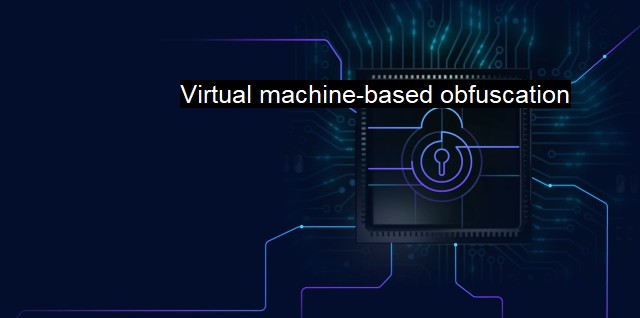What is Virtual machine-based obfuscation?
Exploring Virtual Machine-Based Obfuscation Technique: Protecting Applications in the Digital Age
Virtual machine-based obfuscation is an advanced technique used in the sphere of cybersecurity with the aim of protecting hardware and software systems from breaches and attacks. Employed primarily to obscure or disguise code, it complicates and impedes the task of attackers attempting to infiltrate systems. Virtual machine-based obfuscation involves the deliberate complexity and alteration of computer code, making it difficult for intrusive hackers to understand or reverse-engineer the system.A virtual machine is a self-contained operating environment acting as a separate computer while residing in a physical machine. It replicates the system's architecture and provides the same functionality as a physical computer. Within a virtual machine, various applications and systems can be executed independently from the host machine. Therefore, VM-based obfuscation functions within these parameters by using the virtual machine as a stage for convoluted and complex code.
Obfuscation is the practice of making something difficult to understand or interpret. When applied to machine code, it involves the use of various techniques to alter programming codes making them harder to read and comprehend, thus providing an additional layer of security against malicious actors. VM-based obfuscation operates based on reinterpretation processes, where program instructions are executed within an interpreter implemented in the virtual machine rather than directly on the host hardware.
VM-based obfuscation serves as a shield against illicit activities that hackers or cybercriminals try to perform. This cyber defensive measure works by transforming the original executable software into VM bytecode, adding an extra layer of complexity for attackers attempting to decipher the classified information.
Contemporary hackers have been using the same technology in reverse. They wrap malicious code in an obfuscating laye using VMs, making it challenging to reveal the nebulous activities. Antivirus tools generally work by scanning and comparing the signatures of known malware. since VM-obfuscation can morph malware each time it runs, it makes traditional signature-based antivirus solutions less effective, necessitating enhanced cybersecurity measures.
One way the cybersecurity community is responding to VM-obfuscation threats is by enhancing the dynamism of antivirus software. Now, some security applications can 'unpack' or deobfuscate the code to identify potentially malicious instructions, helping to provide progressive protection against rapidly evolving cyber threats.
The war between the hackers and defenders is in constant flux, and the effectiveness of these measures continually changes. As attackers find new techniques to exploit systems, defenders must in turn find more advanced countermeasures. Today, virtual machine-based obfuscation continues to be a critical tool in the arsenal of both, giving it an ambiguous role within the cybersecurity realm.
While VM-based obfuscation proves significant in safeguarding systems, it comes with its hurdles. The approach's complexity demands substantial computational resources, thus can potentially degrade system performance during execution. It requires meticulous architecture design to optimize bytecode performance to a reasonable execution speed without compromising the essential obfuscation level.
In terms of mitigating risks from malicious VM-obfuscated code, a combined approach of static and dynamic analysis, behavioral detection, and machine learning techniques often proves optimal. With constant advancements in the cybersecurity landscape, the manipulation and comprehension of VM-based obfuscation serve as necessary steps in preparing for the future's cyber threats.
Virtual machine-based obfuscation plays a vital role in the realm of cybersecurity. It acts as a defensive barrier aimed at warding off potential intruders by increasing code complexity, thereby raising the barrier of penetration while simultaneously serving as a disguise for attackers. The consequent challenge for the cybersecurity community is to design system architectures and protective measures able to cope with the continually evolving nature of this technology.

Virtual machine-based obfuscation FAQs
What is virtual machine-based obfuscation and how does it work in cybersecurity?
Virtual machine-based obfuscation is an anti-malware technique used to hide a malware's true behavior. It works by creating a virtual environment or machine where the malware runs and then injecting additional code to confuse and mislead malware analysis and signature-based antivirus programs. By doing so, malware authors can evade detection and make their malware more difficult to detect and analyze.What are the benefits of using virtual machine-based obfuscation?
Virtual machine-based obfuscation provides a higher degree of protection against antivirus software, making it more difficult to detect and analyze malware. It also helps to hide the malware's true behavior, making it more difficult for cybercriminals to develop countermeasures. Moreover, virtual machines are isolated environments, which means that malware running inside a virtual machine cannot infect the host system or other systems in the network.What are the limitations of virtual machine-based obfuscation?
Virtual machine-based obfuscation is not foolproof and can be detected and bypassed by more sophisticated malware analysis techniques. Some antiviruses can detect the additional code injected into the virtual machine, making the technique less effective. Moreover, using virtual machines to run malware is resource-intensive, and it can slow down the malware’s performance.Can virtual machine-based obfuscation be used for good purposes?
Yes, virtual machine-based obfuscation can be used for good purposes, specifically in the field of cybersecurity. Researchers and security professionals can use this technique to analyze malware and test the effectiveness of antivirus software. It can also be used for malware-specific behavioral analysis to identify previously unknown malware threats.| | A | | | B | | | C | | | D | | | E | | | F | | | G | | | H | | | I | | | J | | | K | | | L | | | M | |
| | N | | | O | | | P | | | Q | | | R | | | S | | | T | | | U | | | V | | | W | | | X | | | Y | | | Z | |
| | 1 | | | 2 | | | 3 | | | 4 | | | 7 | | | 8 | | |||||||